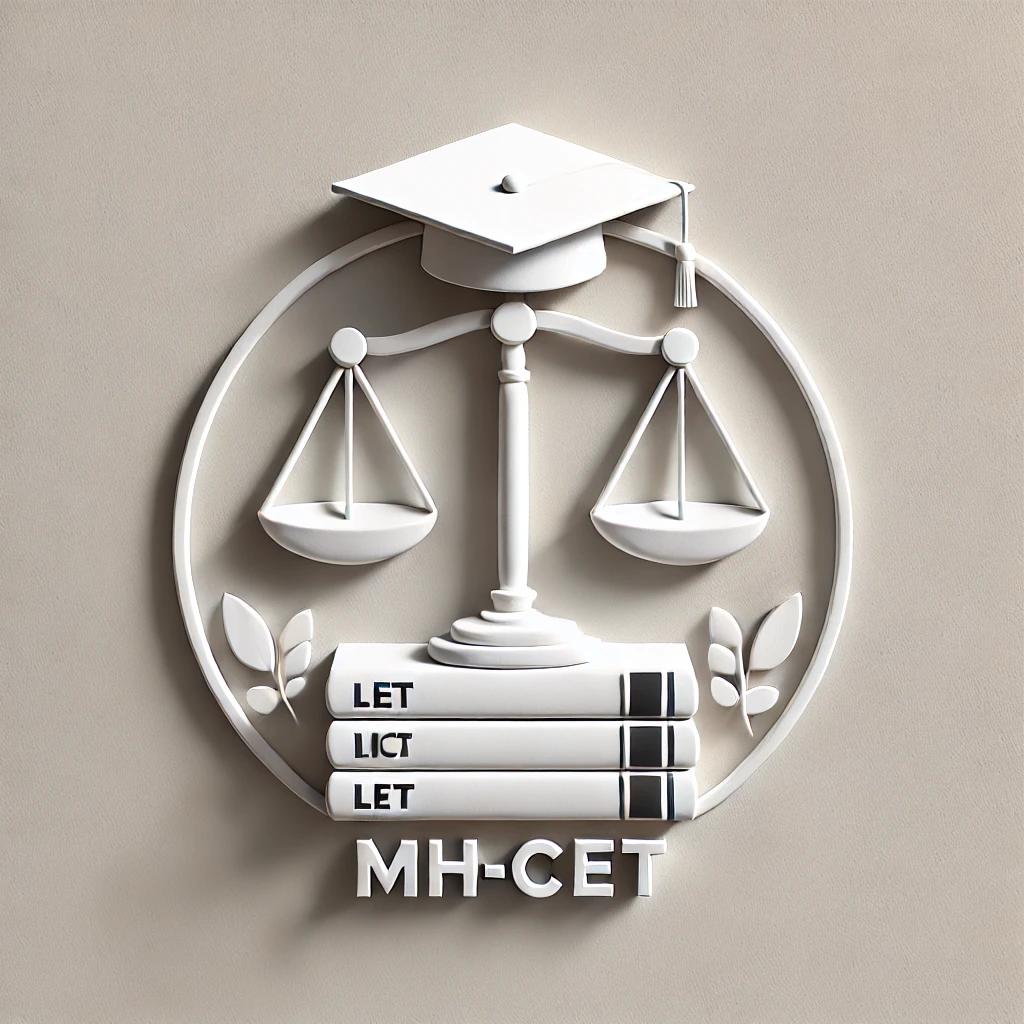By I Aug 20, 2024
Critical reasoning is a vital skill for anyone aiming to succeed in the Common Law Admission Test (CLAT). This skill helps students evaluate arguments, identify assumptions, and draw logical conclusions. Mastering critical reasoning not only boosts performance in the CLAT but also lays a strong foundation for a career in law. This article will explore the importance of critical reasoning in CLAT, its components, effective strategies for improvement, common pitfalls, and the role of reading comprehension.
Key Takeaways
- Critical reasoning is essential for scoring well in CLAT and is a key component of the exam's logical reasoning section.
- Understanding premises, conclusions, and assumptions is crucial for answering critical reasoning questions effectively.
- Regular practice, including analyzing past question papers and taking mock tests, significantly enhances critical reasoning skills.
- Reading comprehension plays a vital role in critical reasoning, as it helps in understanding and connecting ideas within passages.
- Avoiding common mistakes like misinterpreting the passage and drawing hasty conclusions can improve accuracy in answering questions.
Understanding the Importance of Critical Reasoning in CLAT
Role in Law Education
Critical reasoning is essential for law education. It helps students analyze arguments and identify flaws in reasoning. This skill is not only crucial for the CLAT exam but also for a successful legal career. Mastering critical reasoning allows students to make better decisions and understand complex legal issues.
Impact on Overall Score
In the CLAT exam, critical reasoning questions significantly impact the overall score. These questions test a candidate's ability to think logically and evaluate arguments. Performing well in this section can boost your total score and improve your chances of getting into a top law school.
Comparison with Other Sections
Compared to other sections like English and General Knowledge, critical reasoning requires a different set of skills. While English tests language proficiency and General Knowledge assesses awareness of current events, critical reasoning focuses on logical thinking and argument analysis. This makes it a unique and challenging part of the CLAT exam.
Components of Critical Reasoning Questions
Critical reasoning questions in the CLAT exam are designed to test your ability to analyze and evaluate arguments. Understanding the different components of these questions is essential for success.
Effective Strategies for Enhancing Critical Reasoning Skills
Regular Practice and Mock Tests
Consistent practice is essential for improving critical reasoning skills. Aim to solve 6-10 logical passages daily, focusing on assumptions, conclusions, inferences, and strengthening or weakening arguments. Mock tests are also crucial as they simulate the actual exam environment, helping you manage time and stress effectively.
Analyzing Past Question Papers
Reviewing past question papers can provide insights into the types of questions asked and the reasoning patterns used. This practice helps in identifying common traps and understanding the examiner's mindset. Make it a habit to analyze at least one past paper weekly.
Active Reading Techniques
Active reading involves engaging with the text by asking questions, summarizing information, and making connections with what you already know. This technique enhances comprehension and retention, making it easier to tackle complex passages. Try to read a variety of materials, including newspapers, journals, and books, to broaden your understanding.
By incorporating these strategies, you can significantly improve your critical reasoning skills, which are vital for CLAT success.
Common Pitfalls in Critical Reasoning and How to Avoid Them
Misinterpreting the Passage
One common mistake is misinterpreting the passage. This happens when you don't fully understand the main idea or the details. To avoid this, read the passage carefully and make sure you grasp the main points before answering any questions.
Overlooking Key Details
Another pitfall is overlooking key details. Sometimes, small pieces of information can change the meaning of the passage. Pay close attention to every detail to ensure you don't miss anything important.
Drawing Hasty Conclusions
Drawing hasty conclusions is a frequent error. This occurs when you jump to conclusions without considering all the evidence. Take your time to evaluate all the information before making a decision.
Regular practice and mock tests can help you avoid these common pitfalls and improve your critical reasoning skills.
The Role of Reading Comprehension in Critical Reasoning
Reading comprehension is a vital part of critical reasoning, especially for exams like CLAT. It helps in understanding and analyzing passages, which is crucial for answering questions accurately.
Strengthening and Weakening Arguments
Mastering the art of strengthening and weakening arguments is crucial for success in CLAT's critical reasoning section. This skill helps you evaluate the robustness of arguments and identify their vulnerabilities.
Identifying Strong Evidence
An argument is strong when it is backed by solid evidence. Facts, statistics, and expert opinions make an argument convincing. Solid evidence is the backbone of a strong argument.
Spotting Logical Flaws
Every argument has its weaknesses. Understanding these vulnerabilities is key to weakening arguments. Common issues include:
- Irrelevant details posing as evidence
- Hasty generalizations
- Insufficient data
- False dilemmas
Using Counterexamples Effectively
To weaken an argument, you can challenge its premises or introduce counterexamples. Here are some tips:
- Make the premises seem less true.
- Question the validity of any hidden assumptions.
- Present alternative scenarios that cast doubt on the conclusion.
For instance, if a university raises its fees claiming that more revenue will improve research facilities and attract better students, you could weaken this argument by suggesting that many top students prefer affordable universities, even if research facilities are not as good. This alternative scenario exposes a weakness in the original argument.
By mastering these techniques, you can effectively strengthen or weaken arguments, a critical skill for CLAT success.
Making Inferences and Drawing Conclusions
Understanding Inference Types
Inferences are conclusions drawn from evidence and reasoning rather than explicit statements. They require you to read between the lines and understand the implicit meaning. Mastering this skill is crucial for CLAT success. There are different types of inferences, such as:
- Deductive Inferences: These are logical conclusions based on given premises. If the premises are true, the conclusion must be true.
- Inductive Inferences: These involve making generalizations based on specific observations. They are probable but not certain.
- Causal Inferences: These identify cause-and-effect relationships between events or conditions.
Applying Logic to New Scenarios
When faced with new scenarios, applying logic helps in drawing accurate conclusions. This involves:
- Identifying the premises: Understand the given statements or facts.
- Analyzing the relationships: Determine how the premises relate to each other.
- Drawing logical conclusions: Based on the analysis, infer the most reasonable outcome.
Practice Exercises
Regular practice is essential to enhance your inference skills. Here are some exercises to help you get started:
- Read a passage: Identify the main idea and supporting details.
- Ask questions: What can be inferred from the passage? What is implied but not directly stated?
- Practice with past papers: Review previous CLAT question papers to understand the pattern and types of inference questions.
Regular practice and reviewing mistakes are crucial for improvement.
By consistently practicing these exercises, you can improve your ability to make accurate inferences and draw logical conclusions, which is vital for excelling in the CLAT exam.
Legal Reasoning and Its Connection to Critical Reasoning
Legal reasoning is a crucial part of the CLAT exam, and it is deeply connected to critical reasoning. Understanding how to analyze legal texts and apply legal principles is essential for success in this section. Let's explore the key aspects of legal reasoning and how they relate to critical reasoning.
Resources and Tools for Improving Critical Reasoning
Recommended Books and Materials
To excel in critical reasoning for CLAT, it's essential to have the right study materials. Books like 'A Modern Approach to Logical Reasoning' by R.S. Aggarwal and 'Critical Thinking' by Alec Fisher are highly recommended. These books cover various aspects of logical reasoning and provide numerous practice questions. Additionally, reading newspapers and magazines can help improve comprehension and analytical skills.
Online Courses and Tutorials
There are several online platforms offering courses specifically designed for CLAT preparation. Websites like Unacademy and Khan Academy provide comprehensive tutorials on critical reasoning. These courses often include video lectures, practice tests, and interactive sessions, making learning more engaging and effective.
Study Groups and Peer Discussions
Joining a study group can be incredibly beneficial. Discussing questions and answers with peers helps in understanding different perspectives and approaches to solving problems. Peer discussions can also highlight areas that need more focus and provide moral support during preparation.
Consistent practice and utilizing diverse resources are key to mastering critical reasoning for CLAT. Combining books, online courses, and peer discussions can create a well-rounded preparation strategy.
By leveraging these resources, you can significantly enhance your critical reasoning skills and improve your chances of success in the CLAT exam.
The Impact of Current Affairs on Critical Reasoning
Staying Updated with News
Keeping up with the news is crucial for CLAT aspirants. Regularly reading newspapers and watching news channels helps you stay informed about current events. This habit not only boosts your general knowledge but also enhances your ability to understand and analyze complex issues. Consistency in reading and note-taking is key to mastering the current affairs section.
Analyzing Current Events
Analyzing current events involves critically examining news stories and understanding their broader implications. This practice helps you develop the ability to evaluate arguments and identify biases. By regularly engaging with news articles, you can improve your critical thinking skills, which are essential for the CLAT exam.
Incorporating General Knowledge
General knowledge plays a significant role in the CLAT exam. It enhances your legal reasoning skills and analytical abilities. By integrating general knowledge into your daily study routine, you can better understand the context of various legal issues and arguments. This approach not only prepares you for the current affairs section but also strengthens your overall critical reasoning skills.
Staying updated with current affairs is not just about memorizing facts; it's about understanding the world around you and being able to think critically about it.
Current events shape how we think and make decisions. Understanding these events can boost your critical thinking skills. Want to learn more? Visit our website for resources and courses that can help you stay ahead.
Conclusion
In conclusion, mastering critical reasoning is essential for success in the CLAT exam. This skill helps you analyze arguments, identify assumptions, and draw logical conclusions, which are crucial for the exam's various sections. By practicing regularly and understanding reasoning patterns, you can improve your ability to tackle complex questions effectively. Remember, consistent effort and a strategic approach will pave the way for achieving your desired CLAT score. Keep honing your critical reasoning skills, and you'll be well-prepared to excel in the exam.
Frequently Asked Questions
What is Critical Reasoning in the context of CLAT?
Critical Reasoning in CLAT involves analyzing arguments to see if they are valid. It helps you understand and solve complex problems in the exam.
How is Critical Reasoning different from Logical Reasoning in CLAT?
While both involve analyzing arguments, Critical Reasoning focuses more on evaluating the strength of arguments, identifying assumptions, and drawing conclusions. Logical Reasoning often involves solving puzzles and identifying patterns.
How important are Critical Reasoning Questions in the CLAT exam?
Critical Reasoning questions are very important as they help boost your overall score. They test your ability to think logically and make reasoned decisions, which are crucial skills for a law student.
How can I improve my skills in recognizing arguments in a passage for CLAT?
You can improve by practicing regularly, reading actively, and analyzing past question papers. Look for the main point, supporting details, and any assumptions in the passages you read.
What are the key aspects to consider when critically analyzing patterns of reasoning for CLAT?
Key aspects include identifying premises and conclusions, understanding assumptions, evaluating the strength of arguments, and spotting logical flaws or inconsistencies.
How can I effectively draw inferences from a given passage?
To draw inferences effectively, focus on the information given in the passage and use logical thinking to deduce conclusions that are not directly stated but are supported by the text.
How can I identify contradictions and equivalence in arguments for CLAT?
Look for statements that oppose each other or that cannot both be true. Identifying equivalence involves finding different statements that mean the same thing or have the same logical outcome.
How should I structure my preparation plan for Critical Reasoning for CLAT 2025?
Your plan should include regular practice with sample questions, analyzing past papers, using active reading techniques, and taking mock tests to gauge your progress and identify areas for improvement.



